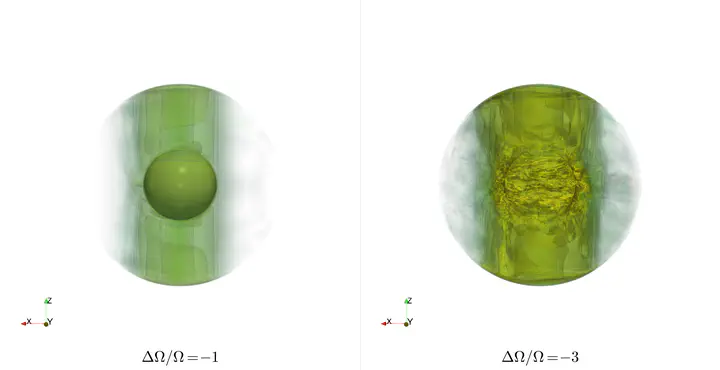
Abstract
The spherical Couette system consists of two differentially rotating concentric spheres with the space in between filled with fluid. We study a regime where the outer sphere is rotating rapidly enough so that the Coriolis force is important and the inner sphere is rotating either slower or in the opposite direction with respect to the outer sphere. We numerically study the sudden transition to turbulence at a critical differential rotation seen in experiments at BTU Cottbus-Senftenberg, Germany, and investigate its cause. We find that the source of turbulence is the boundary layer on the inner sphere, which becomes centrifugally unstable. We show that this instability leads to generation of small-scale structures which lead to turbulence in the bulk, dominated by inertial waves, a change in the force balance near the inner boundary, the formation of a mean flow through Reynolds stresses and, consequently, to an efficient angular momentum transport. We compare our findings with axisymmetric simulations and show that there are significant similarities in the nature of the flow in the turbulent regimes of full three-dimensional and axisymmetric simulations but differences in the evolution of the instability that leads to this transition. We find that a heuristic argument based on a Reynolds number defined using the thickness of the boundary layer as a length scale helps explain the scaling law of the variation of critical differential rotation for transition to turbulence with rotation rate observed in the experiments.